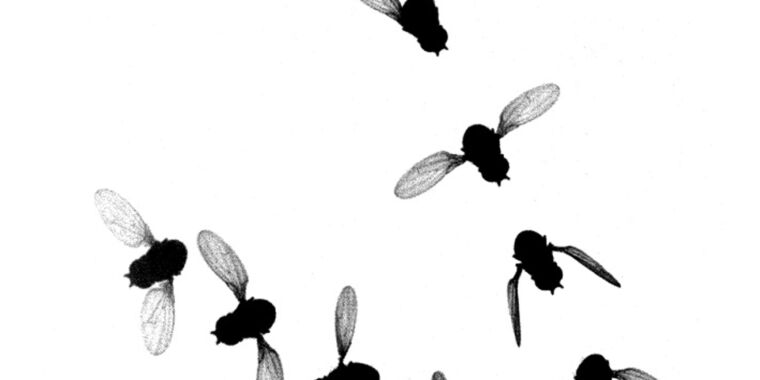The Biomechanics of Insect Flight
Around 350 million years ago, the first flying creatures emerged on our planet. Despite their ancient origin, winged insects are still buzzing around today, posing a mystery to scientists studying their flight. These creatures, known scientifically as pterygotes, continue to intrigue researchers due to the complexity of their flight mechanisms, particularly how they move their wings.
The Insect Wing Hinge
One critical element of insect flight that remains a puzzle is the insect wing hinge, a specialized joint that connects an insect’s wings to its body. This hinge is composed of five plate-like structures called sclerites, interconnected and controlled by underlying muscles. When these plates shift, it enables the insect to flap its wings, allowing it to take flight.
Despite significant advancements in imaging technologies, researchers have struggled to capture the rapid and intricate motion of the sclerites within the wing hinge during flight. Traditional methods such as stroboscopic photography, high-speed videography, and X-ray tomography have fallen short of providing a comprehensive understanding of this microscopic biomechanical process.
Research Breakthrough
In a groundbreaking study led by Michael Dickinson and his team at the California Institute of Technology (Caltech), scientists have finally unraveled the mysteries of the insect wing hinge. By analyzing the wing motion of fruit flies (Drosophila melanogaster) and decoding 72,000 recorded wing beats using a neural network, the researchers were able to determine the precise role of individual sclerites in shaping insect wing motion.
Dickinson emphasized that the biomechanics of insect flight differ significantly from birds and bats, as insect wings did not evolve from forelimbs. Understanding the mechanisms of the insect wing hinge is crucial, as it enables insects to achieve remarkable speed, maneuverability, and stability while in flight.
Evolutionary Origins of Insect Wings
The debate over the evolutionary origins of insect wings, whether from ancient aquatic arthropod gill-like appendages or ancient crustacean leg lobes, continues to be a topic of scientific discussion. However, the focus of the study remains on the mechanical operation of the hinge and sclerites, rather than evolutionary history.
The insect wing hinge is considered one of the most sophisticated skeletal structures in the natural world, essential for the efficient flight of insects. The study authors underscored the importance of understanding the intricate mechanics of the four sclerites that form the hinge, which had previously eluded imaging due to their size and speed of movement.
Research Methodology
To overcome these challenges, Dickinson’s team employed a multidisciplinary approach, utilizing an apparatus equipped with high-speed cameras to track the activity of tethered fruit flies at 15,000 frames per second. They also incorporated a calcium-sensitive protein to monitor changes in the steering muscles of the insects during flight.
The researchers collected a vast dataset of 72,219 wingbeats from 82 flies, which formed the basis for training machine-learning algorithms, including a convolutional neural network and an encoder-decoder neural network. These models enabled the scientists to predict wing motion and the individual muscle actions of sclerites during flight, shedding light on the intricate workings of the insect wing hinge.
Through this innovative research approach, scientists have unlocked a deeper understanding of insect flight biomechanics, providing valuable insights into the evolution and operation of the insect wing hinge.
Image/Photo credit: source url





